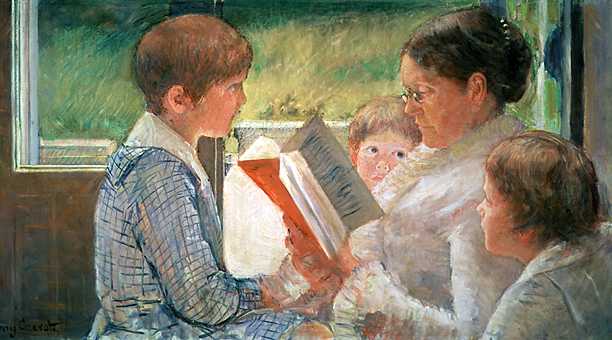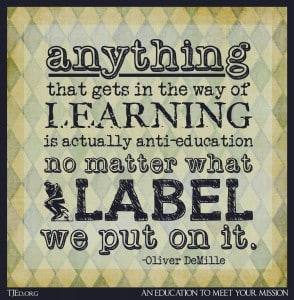New Science on What Makes Quality Education
Harvard Business School recently emphasized that the major changes in the world tend to come from what they called “disruptive innovators.”
Disruptive innovators are disruptive precisely because they are totally unexpected by the mainstream.These are surprising innovations that usually come from out-of-the-mainstream sources and drastically change society, business, and other facets of life.
Malcolm Gladwell wrote a best-selling book* on the concept, showing that many and in fact most of the major societal initiators come from “outliers.”
Why are so many progresses initiated and led by unknown talent hotbeds, what Daniel Coyle called “chicken-wire Harvards”?
Indeed, Harvard, Yale, Stanford and their counterparts may lead the analysis about innovations, but “chicken-wire Harvards” produce many more innovative projects.
The Innovation “Gene”
Why is more entrepreneurial, innovative and leadership education flourishing in small, humble, usually under-funded environments than in the prestigious, elite halls of endowments and status?
And even when the mainstream and elite institutions take note and attempt to emulate such successes, why do they usually fall short of the smaller talent hotbeds?
Nearly everywhere else, the emphasis is on systematized models of learning that students must learn to navigate and “fit.”The answer is simple. The breeding grounds of initiative and leadership believe in and implement the philosophy of individualized education.
To reinforce this point, there are many small, humble and under-funded educational models that are not talent hotbeds—almost invariably they are followers of the “systems model” rather than individualization.
Dead Poet’s Society
I well remember a visit years ago to a private school that had just received two major breakthroughs: an endowment from a wealthy parent, and a new president who promised to significantly grow the school.
As I talked to this president, however, I realized that he fully intended to turn this excellent, proven hotbed of talent into a systematized conveyor belt. He felt that this is what the wealthy donor wanted, and maybe it was.
But I could tell after a few minutes of visiting with him that he would ruin the depth, quality and excellent results the school had boasted for the past decade.
Five years later, my worst concerns were unfortunately the reality. The school was no longer a place of deep quality and excellence, but it was much bigger, more bureaucratic, and hardly distinguishable from the local public schools. Indeed, several charter schools in the area offered much higher quality.
The key to this change was teachers. In the public schools, teachers have been penalized for great teaching since 2002. As Harper’s noted:
“Under the No Child Left Behind Act of 2002…U.S. teachers are forced to choose between teaching general knowledge and ‘teaching to the test.’ The best teachers are thereby often disenfranchised by the improper use of education information systems.”
But in private schools, this system is not mandated. However, when such schools apply the systems approach to education, they usually obtain similar mediocre results.
In the old, under-funded days of this high school, the teachers had given their hearts and souls to provide personalized, individualized attention to every student.
As the school turned to industrial systems, these teachers were forced to move on or change their approach from individualized learning to factory-style academia.
Approaching each child with the assumption that she has genius inside, and that the teacher’s role is to help her find it, develop and polish it to improve herself and the world—this is called teaching. Anything else is something else.
Where true teaching occurs, excellence flourishes. This is applicable at all levels, from elementary to high school, undergraduate to graduate programs, and also adult learning.
Individualization of education is the first step to leadership education, and without it quality always decreases.
Serotonin, Adrenaline and Myelin
Science is now beginning to show the reasons why quality in education increases with individualization.
Studies have shown for a long time that students receiving personalized, caring and quality mentorship learn more effectively than those required to conform to a deeply structured and systemized model.
Elites have historically been successful in engaging tutors, mentors and individualizing private schools over less personal conveyor-belt schooling options.
Scientists are now discovering that the individualized method (personalized mentoring, deep practice, long hours of inspired and enthusiastic academic effort) results in drastically higher levels of the neural insulator myelin than the standardized system of education.
Students with higher levels of myelin learn more and remember it longer. It is especially valuable for gaining, maintaining and polishing skills.
As Daniel Coyle writes in The Talent Code:
“The talent code is built on revolutionary scientific discoveries involving a neural insulator called myelin, which some neurologists now consider to be the holy grail of acquiring skill. Here’s why. Every human skill…is created by chains of nerve fibers carrying a tiny electrical impulse—basically, a signal traveling through a circuit.
“Myelin’s vital role is to wrap those nerve fibers the same way that rubber insulation wraps a copper wire, making the signal stronger and faster…each new layer adding a bit more skill and speed.”
This research is in its infancy, but it is already helping us understand that there are neuro-chemical factors in our basic psycho-physiology that are impacted by our learning environment.
Montessori, Charlotte Mason and other great educators have taught this for many years.
Personalized educational models, with dedicated and caring mentors helping learners achieve depth and inspiration in their studies, achieve better results than assembly-line education.
Mentoring Matters
Quality mentors help students learn at least three key things:
- How to see their internal greatness and potential.
- How to study and practice in ways that greatly increase the flow of learning.
- How to repeat this kind of learning experience at will.
These are nearly always individualized lessons; and when they are applied, researchers are finding, the level of myelin and the resultant quality of learning increases.
To increase myelin levels and create talent hotbeds, Coyle says, mentors must create an environment of individualized coaching, be perceptive in seeing individual needs in their students, use shock or intensity to open student minds and then share valuable information, and find ways to really connect with each learner.
All of this is traditional leadership education, based on the same principles as the 7 Keys covered in my book A Thomas Jefferson Education:
- Classics, not Textbooks
- Mentors, not Professors
- Inspire, not Require
- Structure Time, not Content
- Quality, not Conformity
- Simplicity, not Complexity
- You, not Them (example)
It would be interesting to study the myelin levels of each. Say, for example, a study of myelin levels in students whose teachers emphasize the “inspire” approach versus those with more “requirement-oriented” methods. There could be many other examples.
Individualization Breeds Innovation
One thing is clear, if not yet scientifically studied: Most parents and teachers who apply the 7 Keys see significant, drastic and lasting increases in the quality of their students’ and their own learning.
Personalized education is more effective in helping students learn in their areas of interest, and it also outperforms generally in math, science and technology.
In the decades ahead, as in decades past, many of the most innovative ideas and projects are likely to come from talent hothouses outside the mainstream—places where dedicated and caring mentors help young people see their huge potential, start to discover their great inner genius, and feel inspired to do the hard and effective work of getting a great education.
Individualized, mentored, intensive learning has better results than standardized, rote and minimum-standards systems.
*A portion of the proceeds from amazon purchases originating from links in this article help support TJEd. Thanks for starting your amazon shopping at TJEd.org!






























Oh- I have known this all along. And I believe it also happens with the scriptures as you are reading complex chiastic structures. It makes changes in your brain that open you to the Spirit. The better the imput into the brain, the better neurological structures you brain have. The brain is very neuroplastic and it is possible to change the brain. It is never too late to get off of the conveyor belt brain and have a better one. You can do it at any age!